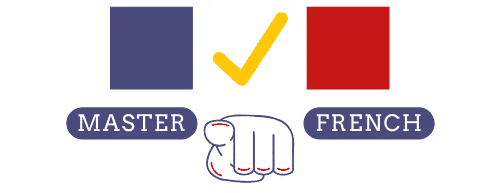Consonant

We describe the articulation of consonants through 4 parameters:
- The sound,
- The manner of articulation,
- The place of articulation,
- The lowering or not of the soft palate.
1. The sound
A consonant can be:
- unvoiced: the vocal cords do not vibrate.
- voiced: the vocal cords vibrate.
The following table shows the list of voiced and unvoiced consonants in French.
| unvoiced consonant | voiced consonant |
| [p] | [b] |
| [s] | [z] |
| [f] | [v] |
| [ʃ] | [ʒ] |
| [t] | [d] |
| [k] | [g] |
| [m] | |
| [n] | |
| [l] | |
| [ʁ] | |
| [ɲ] | |
| [ŋ] |
2. The manner of articulation
Consonants are phonemes that encounter an obstacle when articulating them. This obstacle can be total or partial.
There are 4 manners of articulation: plosive, fricatives, liquids and nasals. Only plosives need a total obstacle to be performed. Others need a partial barrier.
The 4 manners of articulation:
| Plosive | Fricative | Liquid | Nasal |
| [p] | [f] | [ʁ] | [m] |
| [b] | [v] | [l] | [n] |
| [t] | [s] | [ŋ] | |
| [d] | [z] | [ɲ] | |
| [k] | [ʃ] | ||
| [g] | [ʒ] |
There are 4 groups :
- Plosives (or stop) : stop consonants occur when the vocal tract is closed completely
- Fricatives: fricative sounds involve only a partial blockage of the vocal tract so that air has to be forced through a narrow channel.
- Liquid: The only consonants to have the vowel capacity to join with other consonants to form consonant groups.
- Nasal: We let the air pass through the nose and mouth.
3. The place of articulation
The place of articulation is the point where an articulatory organ of the lower jaw (lip, teeth or tongue) approaches an organ of the upper jaw (the alveoli, hard palate, teeth, lips or soft palate).
The places of articulation:
| Place 1 | Place 2 | ||
| Bilabial | lower lips (2) | upper lips (1) | P b m |
| Labiodental | lower lips (2) | upper teeth (3) | F v |
| Apicodentale | tip of the tongue (9) | lower teeth (3) | T d n l |
| Alveolar | tip of the tongue (9) | alveolar (5) | S z |
| Palatal | back of the tongue (10) | hard palate (6) | ʃ ʒ ɲ |
| Velar | back of the tongue (10) | soft palate (7) | K g ɲ |

